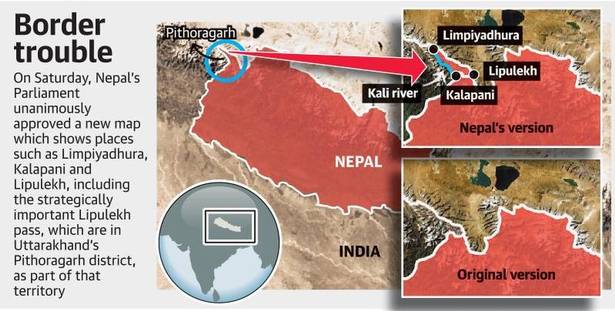7667766266
enquiry@shankarias.in
Why in news?
Nepal's Oli government has passed the constitutional amendment ratifying a change in its map which includes India's territories in Uttarakhand’s Pithoragarh district.
What is the dispute over?

What is the recent trigger?
How are the responses?
How does the future look?
Source: The Hindu
Related Article: India-Nepal Relationship - Kalapani Issue